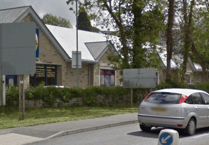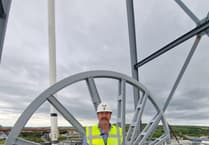This week’s Manic Street Preachers track lookback from the iconic 1998 album This Is My Truth, Tell Me Yours sees us pay a visit to Capel Celyn. If you haven’t heard of it, you aren’t alone – for it hasn’t existed since 1965.
The fate of Capel Celyn is the subject to this week’s track, Ready for Drowning. But what was Capel Celyn and how does it tie into this song, which also features a mid-track sample from the Michael Radford film of 1984 by George Orwell, namely John Hurt as Winston saying: “I will bring the whole edifice down upon their unworthy head.”
But if I was to tell you that what happened to Capel Celyn lead to the rise of the Welsh national party Plaid Cymru and contributed to the movement we know now as devolution, and had a fate that is still felt in the form of anger in Wales to this date, would you believe me? Read on….
Capel Celyn was a rural community in North West Wales, located in the Afon Tryweryn valley. Set amongst a smattering of rural farmsteads was a chapel, burial ground, school, post office and an old Quaker meeting place known as Hafod Fadog.
For centuries, this little, Welsh speaking community did its own thing, with generations of families tending to the farms and living what we’d now know as a true rural idyll until 1957, when it was proposed that Capel Celyn was to be drowned in order to create a new reservoir primarily for industry in the city of Liverpool.
Whereas today, you’d expect consultation after consultation and an extremely long planning process, those in charge of the decision had no interest in talking to residents or waiting for a decision. Despite unanimous opposition from the local community and Welsh politicians across different divides, by utilising a planning loophole whereby the drowning of the village to create the reservoir was mandated by an act of parliament, any pleas fell on deaf ears.
In 1962, when the act of parliament was passed, there was no Welsh office, no devolution and this meant despite 35 out of 36 Welsh MPs voting against the proposal (the 36th did not vote), the plan was passed through thanks to the votes of English parliamentarians, an outrage which was the spark for the fire that led to Welsh demands for devolution and the rise of Plaid Cymru.
And so, in 1965, Capel Celyn was drowned, quite literally and sometimes, when the reservoir is low, you can still see some remains of what was left behind.
Stones from the old chapel were reused in the construction of the Capel Celyn memorial chapel, which overlooks the reservoir that stands where it once did.
Families who had relatives buried in the cemetery were given the option of moving them to another cemetery. Eight bodies were disinterred and the remainder left. All headstones were supposed to be removed, and the cemetery was to be covered in layers of gravel, then concrete, but this was not done.
To this day, 58 years on, Capel Celyn is not forgotten. Near to the sunken village, remains a piece of graffiti which has become a shrine for both the Welsh nationalism movement and those who still feel anger for the village’s fate.
Painted in the early 1960s on the ruins of a ruined cottage by author and journalist Meic Stephens, it simply reads “Cofiwch Dryweryn”, literally translating as “Remember Tryweryn”



.jpeg?width=209&height=140&crop=209:145,smart&quality=75)

Comments
This article has no comments yet. Be the first to leave a comment.